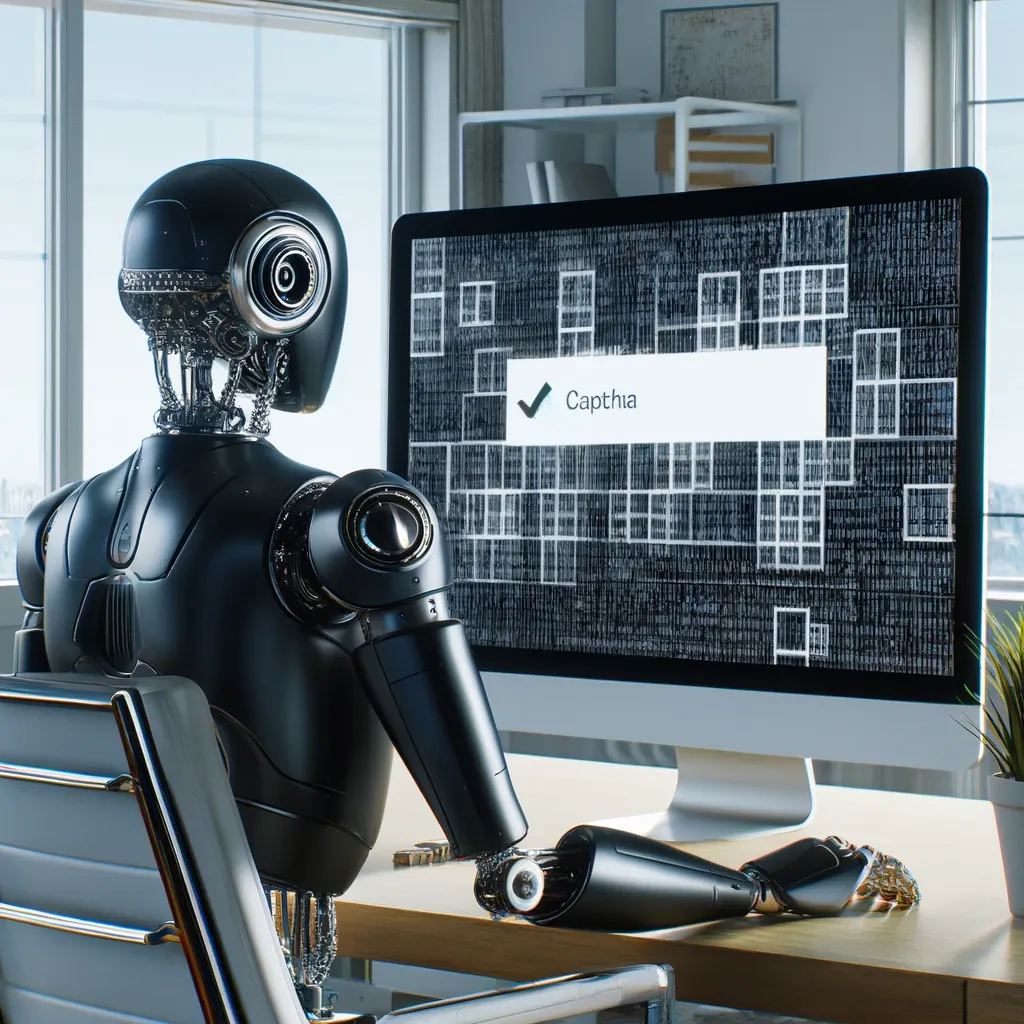If you’ve spent time browsing the internet, you’ve likely encountered the infamous reCAPTCHA box, asking you to check a box that reads “I’m not a robot.” Clicking it seems simple, and most people do so without giving it a second thought. However, behind this seemingly straightforward action lies a sophisticated system designed to distinguish humans from automated bots. While the test appears to check whether someone can click the box or solve image-based puzzles, the real assessment is far more intricate.
This article explores why bots struggle to pass the “I’m not a robot” test, how reCAPTCHA works, and the broader implications of distinguishing human behavior from automated actions.
Understanding reCAPTCHA and Its Evolution
The reCAPTCHA system, developed by Google, has undergone multiple iterations to improve its effectiveness against increasingly sophisticated bots. Initially, CAPTCHAs (Completely Automated Public Turing tests to tell Computers and Humans Apart) involved distorted text that humans could read but machines found difficult to interpret. However, as artificial intelligence (AI) advanced, it became easier for bots to decipher such text.
Google introduced reCAPTCHA v2, which popularized the “I’m not a robot” checkbox. Unlike its predecessors, this version does not rely solely on the test itself but instead analyzes user behavior patterns. Later, reCAPTCHA v3 eliminated the checkbox entirely and worked in the background, assigning users a risk score based on their browsing behavior.
How reCAPTCHA Works: Beyond Just Clicking a Box
Many people assume that reCAPTCHA is a test of whether or not someone can physically click a box or solve a visual puzzle. However, the technology is far more advanced. Here’s how it actually works:
Mouse Movement and Click Dynamics
When a user approaches the reCAPTCHA checkbox, the system monitors mouse movement, speed, and precision. Human users typically exhibit natural hesitations and imprecise motions before clicking the checkbox, while bots tend to move in a linear, predictable fashion with inhuman accuracy. The system records:
•The speed of the mouse movement toward the box.
•Small hesitations or adjustments before clicking.
•Whether the movement mimics typical human behavior.
If the system detects mechanical or overly precise movements, it may flag the user as a bot and prompt further verification.
User Interaction Data
Google collects and analyzes historical behavioral data linked to the user’s Google account (if logged in) or previous interactions across different websites. If a person frequently visits known spam or bot-associated websites, the system may require additional verification.
•Websites visited prior to arriving at the current site.
•Previously solved reCAPTCHAs and their results.
•Patterns of typing, scrolling, and clicking across other sites.
Browser and Device Analysis
Bots often operate from environments that differ from typical human browsing behavior. reCAPTCHA examines various device and browser attributes, including:
•The type of browser being used (bots often use outdated or headless browsers).
•Presence of JavaScript (bots may disable it to increase speed).
•Screen resolution and operating system behavior.
If the system detects unusual configurations, such as a browser session without a user-agent string or automated script activity, it may reject the attempt.
IP Address Reputation
reCAPTCHA assesses the IP address of the user, checking if it belongs to known bot networks, proxies, or VPNs commonly used by bots to mask their identity. If the IP has a suspicious history, the system may prompt further verification steps.
Behavioral Tracking via Cookies
Google tracks users through cookies stored on their devices. If the reCAPTCHA system detects a cookie indicating consistent human behavior across multiple sessions, it may grant a seamless pass without requiring additional verification.
Why Bots Struggle with reCAPTCHA
Despite the advancements in AI, bots struggle to bypass reCAPTCHA reliably because of the following reasons:
Natural Human Imperfections Are Hard to Mimic
Bots are inherently designed to perform tasks with precision and speed. However, human interactions are filled with tiny inconsistencies, such as slight hesitation before clicking or subtle variations in typing patterns. These irregularities are difficult for bots to replicate convincingly.
Machine Learning Detection Algorithms
Google’s reCAPTCHA uses machine learning algorithms that continuously evolve based on millions of interactions. This means that even if a bot manages to mimic human behavior once, the system adapts and recognizes new patterns of automation over time.
Multi-Layered Verification Techniques
The strength of reCAPTCHA lies in its multi-layered approach, combining various signals such as IP reputation, browsing behavior, and device information. A bot may mimic one aspect, such as mouse movement, but it cannot easily bypass all layers of detection.
Dynamic Challenges
When a bot is suspected, reCAPTCHA can escalate the challenge by introducing more difficult tasks, such as solving visual puzzles. These puzzles, which involve object recognition, require cognitive abilities that bots, despite their advancements, may still struggle with.
The Role of AI and Machine Learning in Bypassing reCAPTCHA
While reCAPTCHA is designed to deter bots, advancements in AI have led to the creation of sophisticated bot programs and automated CAPTCHA-solving services. Some bots use:
•Optical Character Recognition (OCR): To solve text-based CAPTCHAs.
•Machine Vision Algorithms: To recognize objects in image-based CAPTCHAs.
•Human CAPTCHA Solving Services: Some organizations outsource CAPTCHA-solving tasks to real humans in low-cost labor markets.
However, Google’s reCAPTCHA system continuously evolves, using AI to stay ahead of such developments by integrating adaptive learning and risk-based analysis.
Implications of reCAPTCHA for Internet Security and Privacy
The widespread use of reCAPTCHA has significant implications for both online security and privacy:
Protecting Websites from Automated Attacks
reCAPTCHA plays a crucial role in preventing:
•Spam and Fake Account Registrations: Bots attempting to flood websites with spam content.
•Credential Stuffing Attacks: Automated login attempts using stolen passwords.
•DDoS Attacks: Preventing bots from overwhelming website servers.
Privacy Concerns
Critics argue that reCAPTCHA allows Google to collect vast amounts of behavioral data, raising concerns about user privacy. Every interaction with reCAPTCHA provides insights into user habits, browsing behavior, and device configurations, which may be used for advertising and tracking purposes.
Accessibility Challenges
While reCAPTCHA is designed to be user-friendly, it can pose challenges for individuals with disabilities. Users with visual impairments may struggle with image-based puzzles, while those with motor impairments may find clicking and dragging difficult.
Future of CAPTCHA Systems
As technology advances, CAPTCHA systems are expected to evolve further to address new challenges posed by increasingly intelligent bots. Some potential future developments include:
Biometric Verification:
Utilizing fingerprint or facial recognition to confirm user identity.
Behavioral Biometrics:
Continuous monitoring of typing speed, rhythm, and touchscreen gestures.
Invisible Verification:
Eliminating visible CAPTCHAs entirely, relying solely on behavioral analysis in the background.
Google’s reCAPTCHA v3 already takes steps in this direction by assigning risk scores without interrupting the user experience.
The Battle Between Bots and Humans Continues
The “I’m not a robot” checkbox is far more than a simple test—it’s a sophisticated system that leverages behavioral analysis, AI, and multi-layered security measures to keep the internet safe. While bots continue to evolve, reCAPTCHA remains a critical tool in distinguishing between human and automated interactions.
For users, the next time you click that small box, remember that behind it lies an intricate web of algorithms ensuring the security of the online world—one click at a time.
No comments yet.







